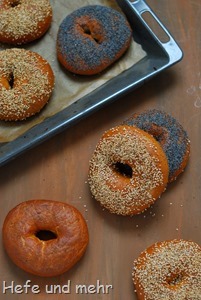 I was asked to include a bagel recipe in my little course about bread baking and I was very willing to do so. Bagels are a good recipe for beginners as the dough is quite firm and not sticky at all. Kneading on the other hand can be a little work out because of the firm dough, too. But kneading a bagel dough is important to get a chewy bagel. So turn on some music and start kneading!
I was asked to include a bagel recipe in my little course about bread baking and I was very willing to do so. Bagels are a good recipe for beginners as the dough is quite firm and not sticky at all. Kneading on the other hand can be a little work out because of the firm dough, too. But kneading a bagel dough is important to get a chewy bagel. So turn on some music and start kneading!
Another important point is boiling the bagels prior to baking. The longer you cook, the denser the bagel will become, as the proteins and starch on the outside of the bagel start already to set, preventing the bagel from rising to much in the oven. I like Bagel on the softer side, so I boil them for 30 seconds on each side. But play around with this time to get your personal perfect bagel! Continue reading

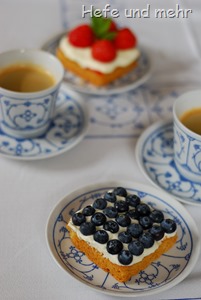
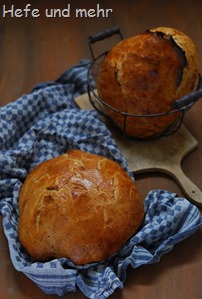 “Eingenetztes Brot” would be Net-Bread if translated literally. But the origin from the word “eingenetzt” does not stem from the German “Netz” (net) but from “Nass”, which means “Wet”. And making the bread is wet indeed. The sticky dough is easiest to handle when hands and tools are really wet. When the bread is placed in the oven its surface is wet as well. This helps to create the shiny crust which is characteristic for this bread. To get the soft dough in the oven without accident, a so called “Schapf”, a kind of ladle, is used traditionally. Even in my rather big kitchen collection, there is no “Schapf” and so I used a small salad bowl instead. And this worked fine!
“Eingenetztes Brot” would be Net-Bread if translated literally. But the origin from the word “eingenetzt” does not stem from the German “Netz” (net) but from “Nass”, which means “Wet”. And making the bread is wet indeed. The sticky dough is easiest to handle when hands and tools are really wet. When the bread is placed in the oven its surface is wet as well. This helps to create the shiny crust which is characteristic for this bread. To get the soft dough in the oven without accident, a so called “Schapf”, a kind of ladle, is used traditionally. Even in my rather big kitchen collection, there is no “Schapf” and so I used a small salad bowl instead. And this worked fine!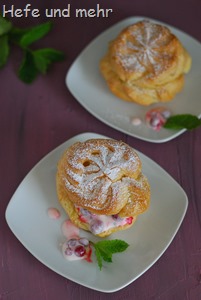 Until now our year was an exhausting one. So we needed a break to refresh and so we headed to the beautiful East Frisia. After a week with some sun, wind and as only sound birds singing in the trees we came back relaxed and happy. After unpacking the car I started to think to finish our short vacation with some sweet treats. A quick look in the fridge revealed some eggs and cream and in the freezer I found some currants from the last year (it is really time to use them!). And about two hours later our table was set with some Cream puffs and coffee.
Until now our year was an exhausting one. So we needed a break to refresh and so we headed to the beautiful East Frisia. After a week with some sun, wind and as only sound birds singing in the trees we came back relaxed and happy. After unpacking the car I started to think to finish our short vacation with some sweet treats. A quick look in the fridge revealed some eggs and cream and in the freezer I found some currants from the last year (it is really time to use them!). And about two hours later our table was set with some Cream puffs and coffee.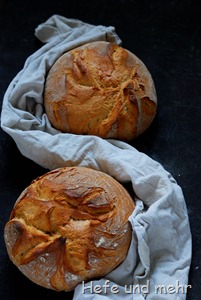
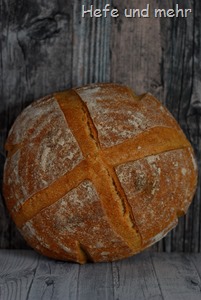 The new Sourdough is ready to bake our first sourdough bread. As a freshly raised sourdough is still a little bit weak, it makes sense to do one (or even better two) sourdough feedings at warm temperature to
The new Sourdough is ready to bake our first sourdough bread. As a freshly raised sourdough is still a little bit weak, it makes sense to do one (or even better two) sourdough feedings at warm temperature to 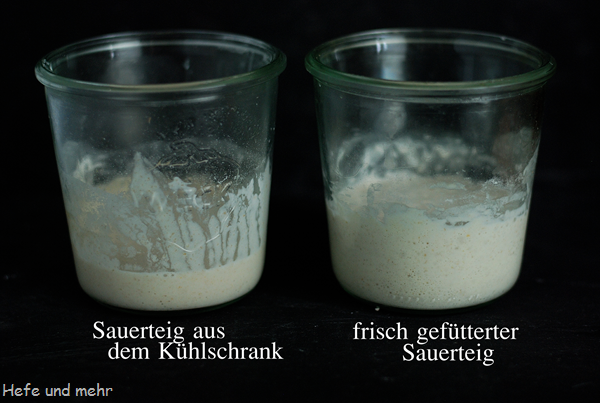 Now we feeded our new sourdough for for four or five days and it is happy bubbeling. But how to proceed now? Here is an overview on how to care for a sourdough:
Now we feeded our new sourdough for for four or five days and it is happy bubbeling. But how to proceed now? Here is an overview on how to care for a sourdough: 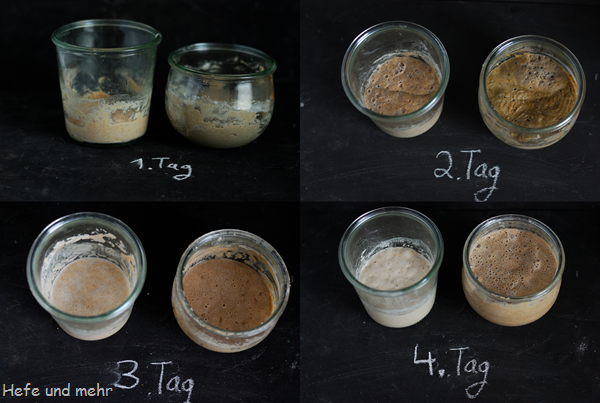
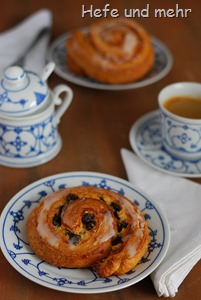
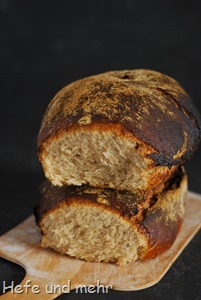 There are a lot of whishes’ for recipes for the bread baking course: the swabian “genetzes” Bread, Baguette, Bread with heirloom grains, yeasted cake, Westphalian Farmer Loaf, Sourdough and Sourdough breads, Salzstangerl, Bagel and Basler Brot. And there are still my personal wishes, a whole grain bread and a multi grain bread. We are not running out of recipes or ideas 🙂
There are a lot of whishes’ for recipes for the bread baking course: the swabian “genetzes” Bread, Baguette, Bread with heirloom grains, yeasted cake, Westphalian Farmer Loaf, Sourdough and Sourdough breads, Salzstangerl, Bagel and Basler Brot. And there are still my personal wishes, a whole grain bread and a multi grain bread. We are not running out of recipes or ideas 🙂